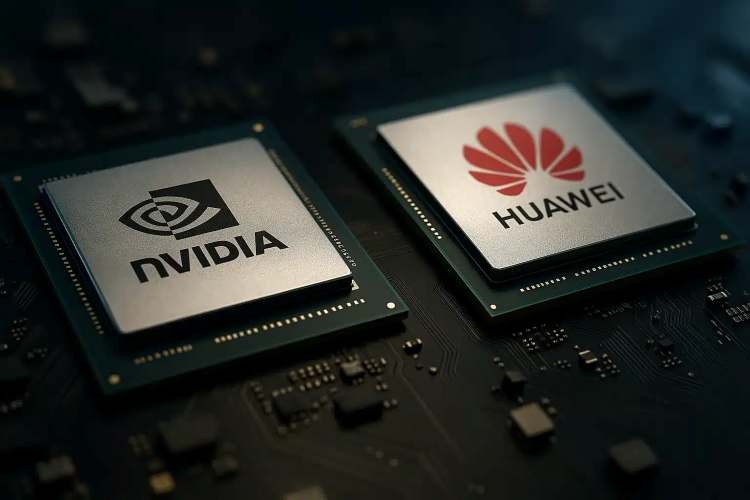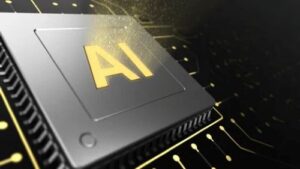
The global race for artificial intelligence supremacy is increasingly being fought on the battleground of semiconductor innovation. Nvidia, the $4 trillion Silicon Valley giant, has for years been the uncontested leader in AI chips, powering everything from generative language models to autonomous vehicles. Its revenues surged 56% year-on-year in the latest quarter, revealing the extraordinary demand for its chips. Yet beneath the glowing earnings lies a new reality: the rise of Huawei, backed by China’s state-driven technological ambitions, now poses the most credible challenge yet to Nvidia’s dominance.
The contest is more than a commercial rivalry. It is a struggle for technological leadership, national security, and economic leverage. Huawei’s aggressive push into AI chips threatens to reorder the global semiconductor landscape and fragment the world’s AI ecosystem into rival blocs.
READ I Break up Google? What the antitrust remedy means for AI
Nvidia’s ascendancy and its fragile foundations
Nvidia’s position at the pinnacle of the AI industry rests on two pillars: the unmatched performance of its GPUs and the ubiquity of its CUDA software ecosystem. These twin advantages created a formidable moat, ensuring that AI researchers, enterprises, and governments worldwide defaulted to Nvidia hardware. The release of ChatGPT in 2022 only deepened this dominance, driving demand for Nvidia’s H100 chips and propelling its stock to dizzying heights.
But the same dominance has invited scrutiny. Some economists warn of an AI bubble exceeding the dot-com frenzy of the 1990s. Even OpenAI’s Sam Altman conceded recently that investor exuberance is outrunning sustainable fundamentals. More worrying for Nvidia are the geopolitical constraints. Washington has repeatedly restricted the export of its most advanced chips to China, forcing Nvidia to develop downgraded models such as the H20. These controls not only limit Nvidia’s access to its largest growth market but also create the very conditions in which domestic competitors like Huawei thrive.
Huawei’s strategic counteroffensive
Huawei, long battered by US sanctions in the telecom sector, has reinvented itself as China’s national champion in AI semiconductors. Its Ascend series of processors, particularly the 910C, now deliver around 60% of Nvidia’s H100 performance, with the forthcoming Ascend 920 expected to narrow the gap further. More strikingly, Huawei’s CloudMatrix 384 supercomputer has reportedly outperformed Nvidia’s platforms on some benchmarks, doubling computing power in large-scale AI training.

Unlike earlier challengers, Huawei is not merely designing chips. It is building an entire parallel ecosystem. Its CANN software stack seeks to replicate CUDA’s functionality, while its open-sourced Pangu AI models aim to accelerate adoption. This dual investment in hardware and software is designed to reduce developer dependence on Nvidia and to anchor China’s AI supply chain in indigenous technology.
Huawei’s efforts are reinforced by massive state support. Beijing is accelerating plans to triple AI chip output by 2026, with new fabrication plants geared specifically for Huawei’s needs. This state-led industrial strategy provides Huawei with both a protected domestic market and the resources to scale, giving it an advantage few private companies can match.
The geopolitical dimension
The rise of Huawei is inseparable from the geopolitics of technology. Washington’s restrictions on advanced chip exports were intended to slow China’s progress. Instead, they created strong incentives for China to build its own ecosystem. Huawei’s success demonstrates the limits of technological containment in a world of converging innovation.

Meanwhile, the Biden and Trump administrations alike have vacillated between bans and compromises. Trump’s recent agreement to allow Nvidia sales to China, in exchange for a 15% revenue levy, illustrates the competing impulses of national security and economic pragmatism. Yet such measures only add complexity for global businesses forced to navigate a fragmented regulatory landscape.
The consequence is an emerging “two-track” AI market: one dominated by Nvidia and AMD in the US, Europe, and allied economies; the other centred on Huawei within China and parts of the Global South. For multinational corporations, this bifurcation means higher costs, compliance risks, and the need to hedge between vendors. For the global AI research community, it risks incompatibility and duplication of effort.
Pressure on pricing and innovation
Huawei’s ascent also alters the economics of AI computing. Nvidia’s chips command extraordinary premiums, reflecting both their performance and lack of credible alternatives. Huawei’s entry, even if confined to China and sympathetic markets, introduces competitive pricing pressure. For an industry already grappling with the staggering cost of AI training—where building frontier models requires billions in compute—the availability of cheaper but capable alternatives could reshape cost structures.
Moreover, competition is a catalyst for innovation. Nvidia will not stand still; its upcoming Blackwell series promises even greater performance. But Huawei’s rapid iteration cycle, fuelled by state investment and strategic urgency, ensures that the contest will be relentless. The beneficiaries will be end-users and enterprises, as both companies push the performance frontier while gradually driving down unit costs.
The broader implications
The global AI chip rivalry is not just a commercial duel but a proxy for broader technological competition between the United States and China. Huawei’s rise affirms Beijing’s determination to achieve self-reliance in critical technologies. For Washington, the erosion of Nvidia’s dominance in China highlights the unintended consequences of weaponising technology trade. For the rest of the world, the danger lies in fragmentation: two parallel ecosystems with limited interoperability, complicating international collaboration in AI research and deployment.
At the same time, this rivalry accelerates the democratisation of AI computing. As more players challenge Nvidia, the concentration of technological power in one firm—and by extension, one country—will be reduced. This diffusion could spur innovation globally, even as it introduces inefficiencies through duplication and incompatibility.
What should policymakers and industry leaders take away from this unfolding contest? First, governments must recognise that attempts to choke off technology flows often produce the opposite effect, accelerating the rise of alternative ecosystems. A strategy of engagement, coupled with safeguards for security and intellectual property, may serve national interests better than blanket bans.
Second, companies must prepare for a bifurcated AI hardware landscape. A dual-vendor approach—balancing Nvidia’s incumbency with Huawei’s emerging ecosystem—will become essential for resilience. Architecting AI infrastructure to remain flexible across hardware platforms will be critical for enterprises navigating this geopolitical terrain.
Finally, there is a pressing need for international standards that preserve some measure of interoperability. Without them, the global AI ecosystem risks splintering into rival technological blocs, undermining the collective gains of open science and collaboration.
Nvidia’s dominance in AI chips is real but no longer unassailable. Huawei, leveraging state support, technological innovation, and a vast domestic market, has emerged as a formidable challenger. The battle between the two is not merely about chips but about the future architecture of artificial intelligence itself. Whether the outcome is a fractured world of rival ecosystems or a competitive but interoperable marketplace will depend on the choices of policymakers and industry leaders in the years ahead.
